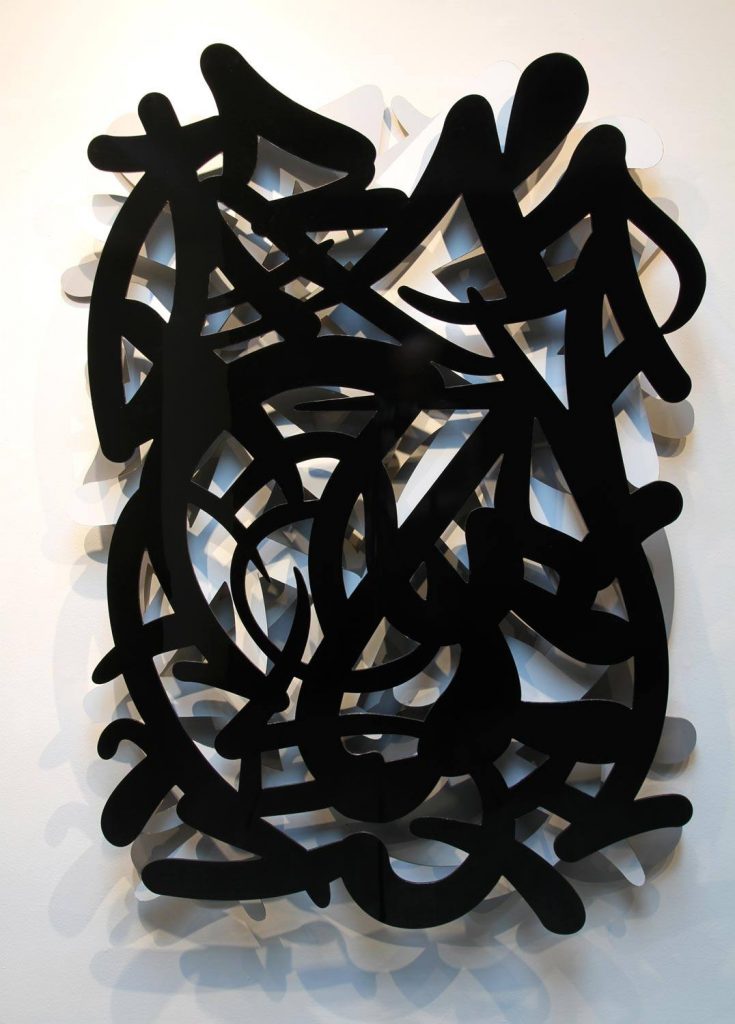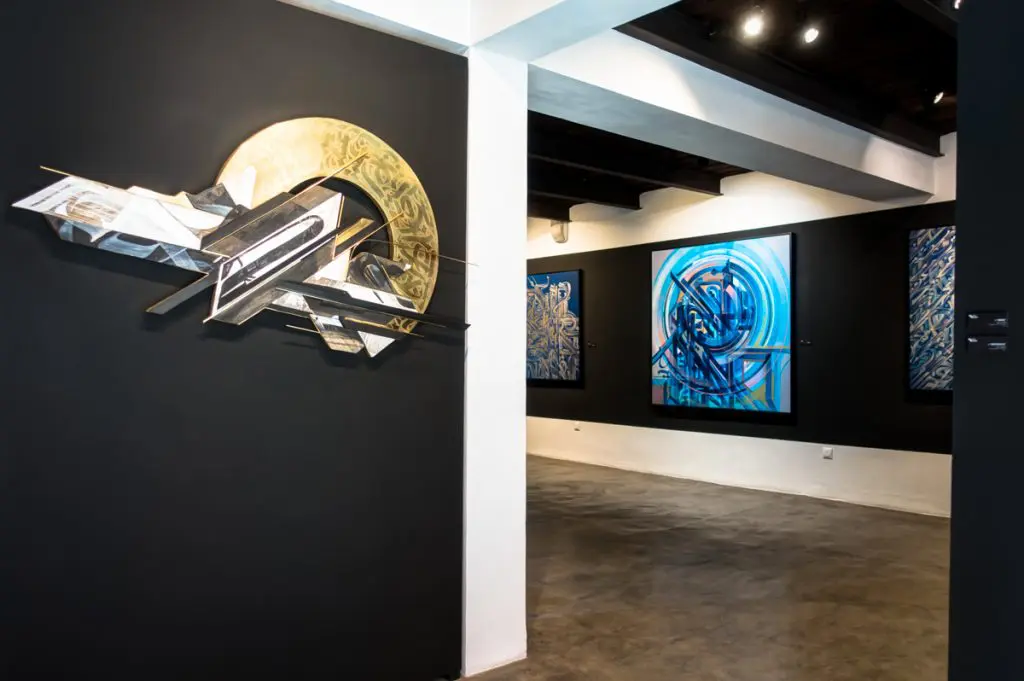David Bloch Gallery in Marrakech
Contemporary art and roots in graffiti culture
After a phone conversation on 12.02.2019
Paris and Marrakech
David Bloch grew up in Paris with the second generation of graffiti writers end of the 80ies. He was a writer himself for several years and well connected with the growing scene. As an entrepreneur he moved to Marrakech in 2008 and decided, because of his passion for art, to open a gallery in the Gueliz district in 2010. In the beginning, he exhibited artists whom he knew personally from the Paris graffiti scene and who had – in the post-graffiti era -artistically opted for painting. Many internationally active artists exhibited temporarily in his modern space of 150m2. At that time there were only 5 to 6 galleries in Marrakech, representing mostly local and traditionally working artists. At that time Rabat or Casablanca had more international contemporary art galleries. But in the last 10 to 20 years, however, Marrakech has developed into a hip city and a certain luxury tourism has emerged. Through the art biennale, art fairs and a street art festival, contemporary art is now very present in the Moroccan medieval city, even without a local graffiti culture. Visitors from all over the world are also spending money on art. But besides the collectors and spontaneous buyers who walk into the gallery space, the online sales has become an important part of the art trade. For David Bloch Gallery it represents around 20% of the sales.
vincent abadie hafez – david bloch gallery / oct 2017 vincent abadie hafez – david bloch gallery / oct 2017 vincent abadie hafez – david bloch gallery / oct 2017
Established and emerging artists
Today, the David Bloch Gallery has up to 28 artists in its program, most of whom have their roots in graffiti writing, today mainly called urban art artists. Bloch represents several internationally renowned artists, such as Carlos Mare aka Mare139, a pioneer from New York who was the first writer to bring lettering styles into sculptural form. Or the figurative Alëxone Dizac, as well as Mist, L’Atlas and Tanc from France, who are represented in several galleries worldwide. In addition to five to seven established artists, Bloch supports local painters who incorporate a calligraphic handwriting into their lyrical abstract painting, such as Larbi Cherkaoui or Mohamed Boustane, as well as young emerging talents. The French artists Arthur Dorval and L’Outsider are among the young abstract working artists. While the youngest of them, Arthur Dorval, paints geometric colored pictures, L’Outsider forms graphic compositions with black-and-white contrasts and grayscales. These kind of compositions were first approached in his former black-and-white pieces on walls, but here in his studio works, he frees himself from the alphabet, like most former writers. Since 2013, the gallery also represents the French artist Jaybo Monk, who lives in Berlin since 1985 and is a veteran among the activists and creative entrepreneurs in West-Berlin’s graffiti and hip hop culture. His collage-like painting of figuratively poetic motifs, abstract elements and color surfaces inspired many young artists.
Authenticity
In addition to the art of his chosen ones, David Bloch especially appreciates authentic artistic positions and the human being behind the artist. Art must be honest and coming from the gut, the cooperation between the gallery and the artist develops on a human basis and should last over a longer period of time. The gallery owner does not work speculatively. Followers who suddenly appear and produce “urban art” because it’s a trend, but do not practice spontaneous art in public space for years, have no chance to enter the David Bloch Gallery. Talent and street credibility must already be given. According to Bloch, graffiti shouldn’t migrate on canvas as a piece painted on a wall, but rather be transformed through an artistic process. Graffiti on canvas, spray can effects, trendy Pop Art motifs and cartoon characters, images that many people buy and are usually classified as street art, do not meet Bloch’s taste at all.
Critical development of “urban art” and the terminology problem
Bloch is pretty critical towards the development of the so-called urban art market. Some side effects such as speculation, mass production of sought-after artists who become businesses or the appropriation are some to consider. The gallery owner is pleased about the growing art market, leading in France, but there are some collateral damages for “post-graffiti art” (for him the most appropriate term, because it ends the graffiti era of an artistic career and announces a new one in the studio). Today, the terms graffiti, street art or urban art are arbitrarily used, adopted and occupied, art and culture are appropriated by people who often have little knowledge and the necessary foundation. This appropriation is usually done with the intention of making profit. David Bloch even speaks of the rape of a culture. It is exploited, used in the media, commercialized, copied and thus partly expropriated and wrongly conveyed. Thus it experiences on the one hand a commercial hype, but on the other a devaluation on an artistic level. And in the global contemporary art world, the art forms that once emerged on the street, are still looked down on with a smile. What this art world may not yet have understood is that this art living under several terms, has not only one form and expression, but contains so many styles, techniques and different conceptual approaches. It is extremely versatile, like no other global art movement. For these reasons, the appropriate terminology remains so difficult. Moreover, many protagonists are not satisfied with one term because they come from different scenes and work with different approaches, so they usually disagree. But one thing is clear: graffiti writers don’t want to be called street artists. As a phenomenon, art in the urban context fortunately keeps on living independently, continues to develop and, above all, it exists self-sufficiently, in the underground, far from all commerce.
http://www.davidblochgallery.com/

562 views
Categories
Tags:












Leave a Reply